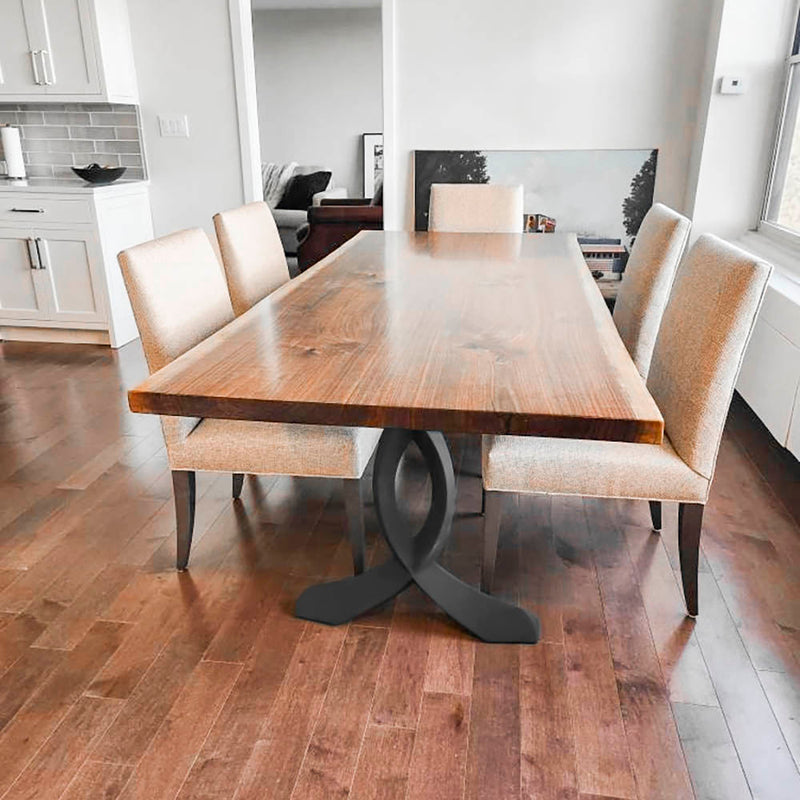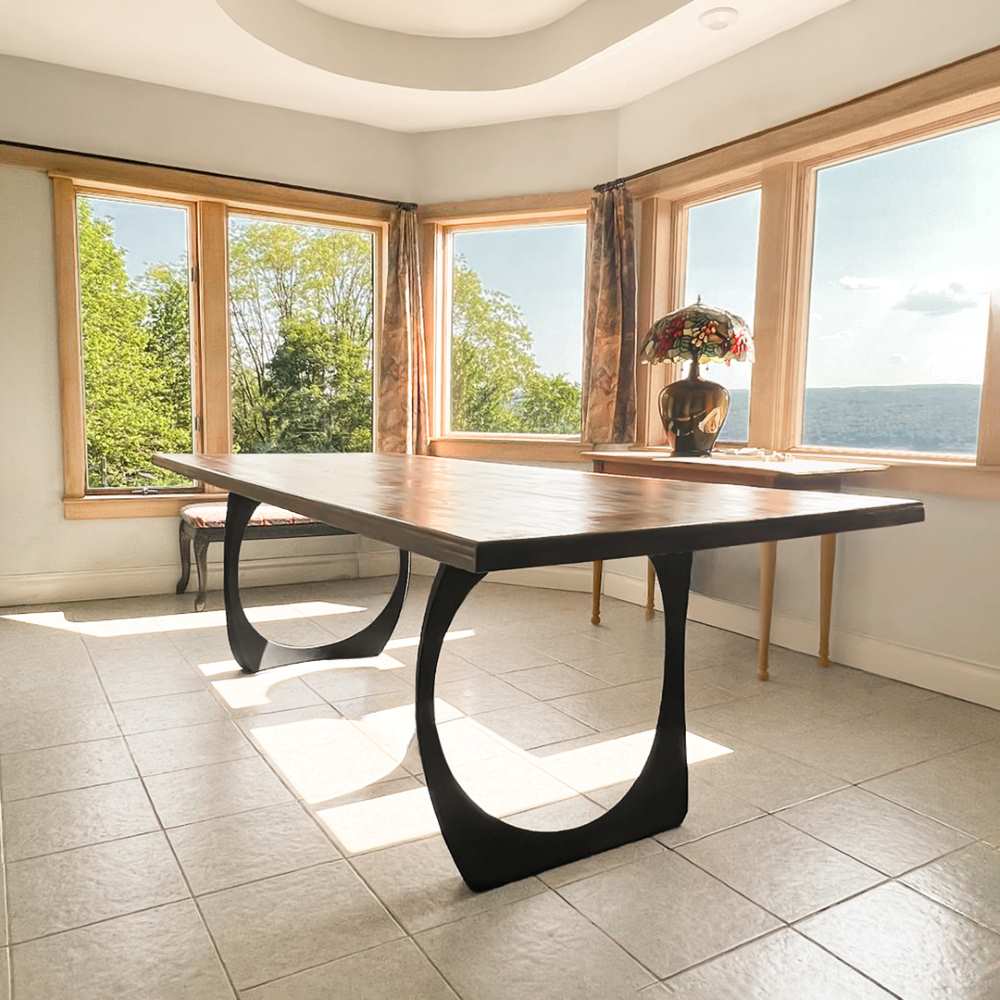Transform Your Dining Space with Stylish Dining Room Table Legs
Transform Your Dining Space with Stylish Dining Room Table Legs
Blog Article
Specialist Tips for Installing Dining-room Table Legs for Maximum Stability
When it concerns mounting dining space table legs, attaining optimum security is extremely important for both performance and visual appeals. The process starts with selecting the appropriate products and hardware, adhered to by precise placement and consideration of weight circulation. Each action plays a critical role in making sure that the ended up product endures everyday usage without endangering security or layout integrity. Understanding the nuances of these aspects can dramatically affect the overall end result. What specific methods can boost stability even better?
Pick the Right Legs
When selecting the suitable legs for your dining area table, it is important to think about both functionality and aesthetics. The legs you choose will substantially impact the total style and stability of the table. Evaluate the table's planned usage; if you expect frequent gatherings, sturdier legs, such as those made from strong wood or steel, may be much more ideal, as they provide enhanced longevity and support.
Common dining tables normally range from 28 to 30 inches in elevation, so ensure the legs line up with this criterion for convenience. Tapered legs can add a contemporary touch, while turned legs might convey an extra timeless visual.

Select Appropriate Equipment
Just how can the right equipment improve the stability and longevity of your dining area table? The selection of proper equipment is crucial to making sure that the legs of your table are safely affixed and able to hold up against routine usage. High-quality screws, screws, and brackets provide the needed strength to sustain the weight of the table, along with any kind of extra tons put upon it during dishes or gatherings.
When selecting screws, decide for those made from resilient products such as stainless steel or brass, which stand up to deterioration and keep stability with time. The size of the screws is just as important; they should pass through deeply into the table's structure without endangering honesty. For bolted links, take into consideration utilizing lock washers to avoid loosening because of vibration or activity.
In addition, using corner brackets can add added assistance, specifically for larger tables or those with much heavier tops. These braces disperse weight evenly and help keep the table's shape. Making certain that the equipment you pick is appropriate for the details materials of your table will better enhance its overall security and durability, enabling you to enjoy your dining experience for years to find.
Ensure Correct Positioning
Correct placement of eating area table legs is essential for both aesthetic allure and functional stability. To achieve ideal placement, start by measuring the distance from the table's corners to the leg attachment factors.
Make use of a level throughout installment to verify that each leg is vertical to the table top. This action is vital, as also minor inconsistencies can intensify into considerable stability problems with time. It is advisable to mark the desired leg positions on the bottom of the table with a pencil or concealing tape before securing them. This method works as an aesthetic overview, enabling for adjustments as needed.
Moreover, verify the positioning after the preliminary screws are tightened, as adjustments may be necessary prior to completely securing the hardware. By prioritizing proper alignment, you not just boost the table's general style however also ensure that it remains secure and functional for many years ahead.

Consider Weight Distribution
After ensuring appropriate positioning of the dining-room table legs, it is very important to take into consideration weight circulation to boost stability and performance. dining room table legs. Appropriate weight distribution is crucial in stopping wobbling and making sure that the table can support its intended lots without threat of tipping or collapsing
When positioning the legs, guarantee they are placed at equivalent ranges from the facility of the table to evenly disperse the weight across the framework. Consider the weight of the tabletop and any items that will frequently relax on it, such as tabletop devices or decorative pieces. Tables with heavier surface areas need to click here for info preferably have legs located closer to the corners, as this maximizes the base of support and decreases the risk of instability.
Additionally, if the table is intended for use in a high-traffic location, consider making use of larger materials for the legs or including maintaining components, such as cross-bracing or a lower rack - dining room table legs. These adjustments can help keep balance and avoid shifting throughout usage. Ultimately, a well-considered weight distribution approach will dramatically improve the table's general performance, ensuring it stays a appealing and functional focal point for your dining space
Test Security Before Use
Evaluating the stability of the eating room table prior to use is an important action that needs to not be overlooked. If the table reveals instability, determine the legs or joints visit their website that might call for modification.
Next, check that all fasteners and screws are tightened appropriately. Loosened connections can lead to instability and potential damage in time. If essential, make use of timber adhesive on joints to enhance security, making certain to permit adequate drying out time.

Verdict
In conclusion, the setup of eating room table legs needs mindful consideration of materials, weight, hardware, and positioning distribution to achieve maximum stability. By selecting high-quality fasteners and strong legs, making sure specific positioning, and distributing weight equally, the architectural honesty of the table can be substantially enhanced. Conducting a stability test before regular use even more ensures that the table will certainly endure everyday pressures, thus offering a safe and reliable eating experience.
When it comes to installing eating area table legs, accomplishing optimum stability is extremely important for both capability and looks. The legs you choose will substantially influence the total style and security of the table (dining room table legs). Standard dining tables usually vary from 28 to 30 inches in height, so guarantee the legs line up with this requirement for convenience.Correct alignment of dining area table legs is vital for both visual charm and functional security.In verdict, the installment of eating area table legs content needs mindful factor to consider of products, weight, hardware, and placement distribution to achieve optimum stability
Report this page